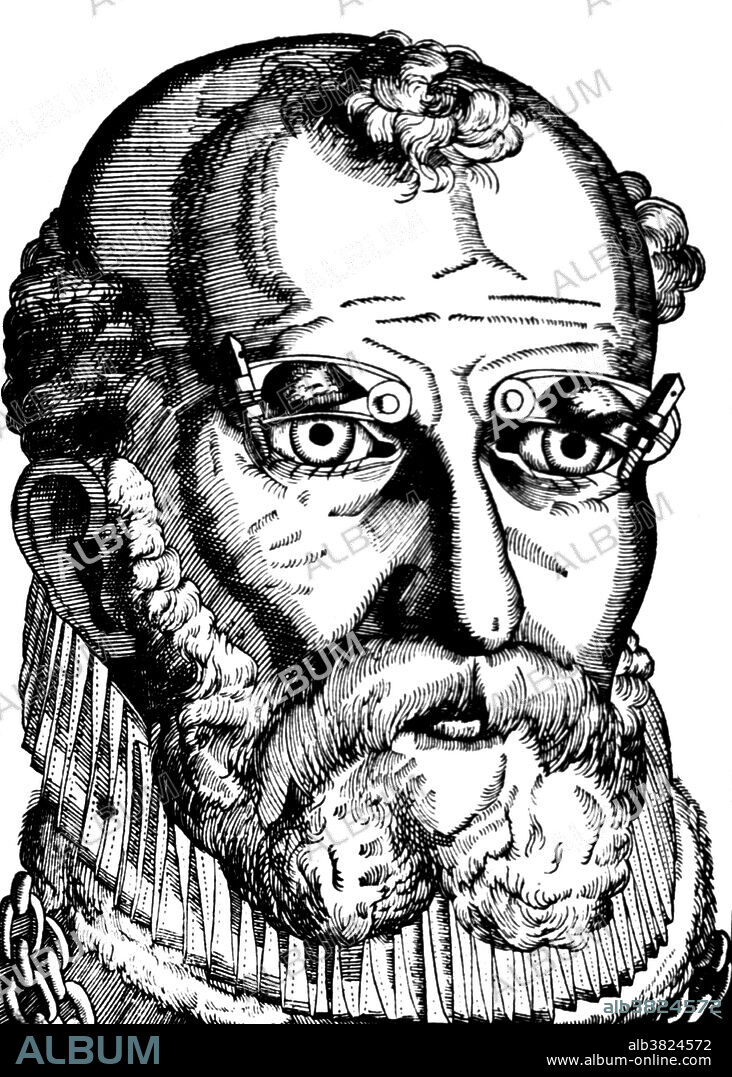alb3824572
Eyelid Surgery, 16th Century

|
Añadir a otro lightbox |
|
Añadir a otro lightbox |



¿Ya tienes cuenta? Iniciar sesión
¿No tienes cuenta? Regístrate
Compra esta imagen.
Selecciona el uso:

Título:
Eyelid Surgery, 16th Century
Descripción:
Ver traducción automática
Woodcut entitled: Use of the clamp in eyelid surgery. Close-up of a man's face showing eyelid clamps for the treatment of ptosis. Ptosis is a drooping or falling of the upper or lower eyelid. The drooping may be worse after being awake longer, when the individual's muscles are tired. If severe enough and left untreated, the drooping eyelid can cause other conditions, such as amblyopia or astigmatism. Ptosis occurs when the muscles that raise the eyelid (levator and Müller's muscles) are not strong enough to do so properly. It can affect one eye or both eyes and is more common in the elderly, as muscles in the eyelids may begin to deteriorate. Ptosis can also be congenital. Appeared in Ophthalmodouleia by Georg Bartisch, 1583.
Crédito:
Album / NLM/Science Source
Autorizaciones:
Tamaño imagen:
2700 x 3775 px | 29.2 MB
Tamaño impresión:
22.9 x 32.0 cm | 9.0 x 12.6 in (300 dpi)
Palabras clave:
ABRAZADERAS • ARTE • BLANCO Y NEGRO • CIENCIA • CIRUGIA ESTETICA • CIRUGIA PLASTICA • CIRUGIA • CONGENITA • DIBUJO • GRABADO EN MADERA • HISTORIA • HISTORICO • HOMBRE • HOMBRES • ILUSTRACION • MASCULINO • MEDICINA • MEDICINAL • OBRA DE ARTE • OCULARES • OFTALMOLOGIA • OJO • OJOS • OPERACION QUIRURGICA • OPERACION • PÁRPADO • PLANCHA DE MADERA • RETRATO DE HOMBRE • S. XVI • SIGLO XVI • XILOGRAFIA
 Pinterest
Pinterest Twitter
Twitter Facebook
Facebook Copiar enlace
Copiar enlace Email
Email
